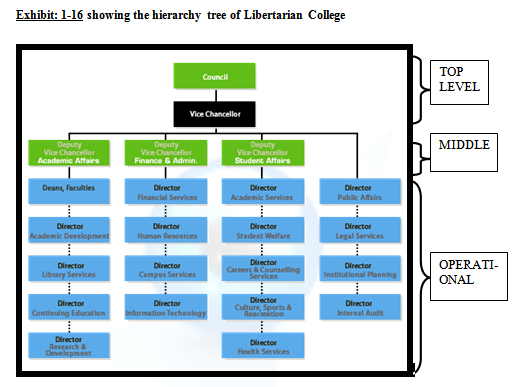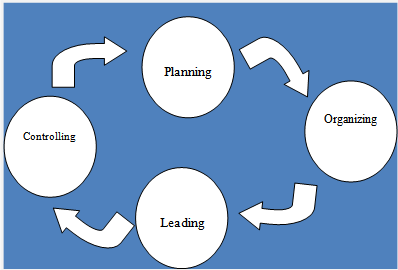Executive Summary:
Libertarian College is a private, virtual liberal arts college promoting strong cultural and social values to the youth of Bangladesh.
One of the defining characteristics of Libertarian College is the rich knowledge culture base it possesses. Unfortunately, there has been an inexorable decline in the levels of veneration for ‘good will’, especially in the young generation. A post-modern culture now prevails and measures need to be taken to mitigate these harmful effects of post-modernism.
Our mission is to attract a young clientele and gradually have the different groups of people from around the country coalesced into a dominant one-the people who are true to themselves and hold strong values. This mission is to be accomplished by exposing our students to a wide range of academic curriculum which would broaden their perspectives.
We have instigated this program to bring about a change-a reform that is now vital to our nation. Rather than emphasizing a specific course of study or professional training, this liberal arts college aims to expose students to a wide breadth of courses in the humanities and both physical and social sciences.
A student’s coursework at this school would include many or all of the following subjects: history, philosophy, religion, literature, physical sciences (e.g., biology, chemistry, and physics), social sciences (e.g., psychology, sociology, economics, and politics), the arts (e.g., theater, music, and art), languages, and mathematics.
We stress the importance of teaching by faculty where there is effective communication between the students and the teachers. With meticulous planning and other preparation, our vision is a feasible one.
Profile of the Team:Team members
Meshkat Mahbub
092 0242 030
Ridwana Ahmed
101 0542 530
Shahir Fahim 092 0548 530
Nilufar Nahar Sadia
092 0103 030
Nipa Afroze
092 0089 030
Research Objectives
The primary sources of information were the Internet and various text books. These sources, combined with the diligent and arduous effort of each and every group member, this project has been completed successfully.
The specific objectives of the report were to:
- Implement the theoretical management aspects taught in the course MGT210 in a real life situation- managing a virtual campus.
- Understand how a typical organization functions, how an organization count be planned and organized effectively and efficiently, and how and to what extent management plays a leading role at this level.
- Increase external knowledge and abilities; also create an intrinsic value by preparing us for further courses.
- Enhance our abilities as report writers, and as presenters of data and information.
- Learn about the basics of co-ordination and communication- qualities that are of major importance at any working environment for the work to be conducted efficiently and effectively.
Table of Contents:
Letter of Transmittal 2
Acknowledgement 3
Executive Summary 4
Profile of the Team 5
Research Objectives 6
1) Company Overview 8
2) Industry Overview and Analysis 18
3) Marketing Overview and Marketing Plan 29
4) Company Value Chain Analysis and Operational Plan 31
5) Management and Organization 36
6) Conclusion 42
7) Appendix 43
COMPANY OVERVIEW
Mission Statement:-
Libertarian College is an institution of higher education in the liberal arts devoted to the intrinsic value of intellectual pursuit and governed by the highest standards of scholarly practice, critical thought, and creativity. Its undergraduate program of study, leading to the degree of Bachelor of Arts, is demanding and intense and balances breadth of knowledge across the curriculum with depth of knowledge in a particular field of study. The goal of the Libertarian education is that students learn and demonstrate rigor and independence in their habits of thought, inquiry and expression.
(source:http://www.reed.edu/catalog/about_reed/)
Our vision to create a broad-minded society- one that is tolerant, and is not bound by authoritarianism or orthodoxy. Our aim is to make the best out of our students and metamorphose them into people who favor a political philosophy of progress and reform and the protection of civil liberties.
Exhibit: 1-1, showing the timeline of the strategies and planning process.
Key Products/ Services:
Programs and Courses Offered at the Institution:
Departmental Majors:
- Anthropology
- biology
- chemistry
- creative writing
- economics
- history
- linguistics
- literature
- mathematics
- linguistics
- physics
- political science
- psychology
- religion
- sociology
Courses Offered:
Humanities
Libertarian College offers an educational program based on “an honest effort to disregard old historic rivalries and hostilities between the sciences and the arts, between professional and cultural subjects, and, I might add, the formal chronological cleavage between the graduate and the undergraduate attitude of mind.”
Humanities 11, 12 – Humanities in Perspective
Humanities 110 – Introduction to Western Humanities
Humanities 210 – Early Modern Europe
Humanities 220 – Modern European Humanities
Humanities 230 – Foundations of Chinese Civilization
Humanities 411 – Senior Symposium
Arts :
The academic program of the Division of the Arts encourages scholarship, creativity, and performance. Opportunities for performance and production provide intensive experience in the study and practice of the various artistic disciplines. Major programs are available in art and literature.
Division of History and Social Sciences:
- Anthropy
- economics
- history
- politial science
- social studies
Division of Literature:
- creative writing
- english and bengali literatur
Division of Mathematics and Natural Sciences
Introductory courses in the Division of Mathematics and Natural Sciences help students become familiar with elementary principles that form a basis for understanding each discipline. Instruction clarifies methods of observation, experimentation, analysis, and reasoning by which insight is gained into the nature of the mathematical and physical worlds. Introductory and advanced courses in mathematics and the natural sciences are planned as part of students’ education in the liberal arts. Advanced courses in different scientific fields extend students’ knowledge and give them training in specialized techniques characteristic of the individual.
sciences. (Source:http://www.reed.edu/catalog/programs/div_mns.htm)l
Division of Philosophy, Religion, Psychology, and Linguistics
In addition to providing majors with the opportunity for intensive concentration in philosophy, religion, psychology, or linguistics, the division encourages interdisciplinary work.
Divisional Requirements:
The Division of Philosophy, Religion, Psychology, and Linguistics maintains no specific requirements. (Source: http://www.reed.edu/catalog/programs/div_prpl.htm)l
Academic Support Services:
Libertarian Collage is a place where intellectual life is paramount; where the primary goal is not learning to make the grade but learning to learn. Academic Support Services offers peer tutoring, workshops, and individualized support to help you get the most out of the Libertarian curriculum.
Individual Tutoring:
One-on-one tutoring is provided by qualified Libertarian students of advanced standing and is available for most classes. This is done via chat rooms.
Help Centre:
The Writing Center is a service where tutors are prepared to assist students of all levels at any stage of the writing process with papers in a variety of disciplines, résumés, personal statements, and other writing tasks. The Writing Center is a resource to help students improve technical skills, develop analytical strategies, and integrate both into a clear and cohesive presentation of original ideas.
Q Center
The Quantitative Skills Center is a resource intended to help support Libertarian College students in natural and social sciences courses with quantitative content.
Math Center
The Math Center is open to help with homework and problem sets, questions about course material, and clarification of concepts throughout the semester.
Language Lab
The language tutors provide assistance in writing, speaking, reading, and understanding the languages taught at Reed. They can also help students to use the language-specific computing.
Research and Development:
Emphasis is given on Research and development, conducted by both the faculties and the students.
The Visual Resources
Collection of the Department of Art maintains a continuously expanding collection of analog and digital images that primarily supports the daily teaching and ongoing research of the faculty and students in the department, and secondarily the general teaching of visual culture by Libertarian College faculty. Works of art and architecture from prehistoric times to the present, from both Western and non-Western cultures are represented.
Financial Aid
Believing that everyone at the college benefits from having a diverse student population from a wide range of economic and social backgrounds, Libertarian College is committed to providing a comprehensive, need-based financial aid program that seeks to bring the college’s educational opportunities within the reach of all qualified students.
Student Loans are also made available for srudents.
Employment
Regular student employment is funded by the college. Regular work-study programs are alvaiable for students.
Clubs and events:
Several clubs are present withing the institution and they conduct and organize various forms of events and other recreational activities.
International Programes:
We welcome international students to take admission here at our institution. Quotas are available in oder to encourage them into creating a multicultural dimension at our institution.
Library:
The library is a central part of intellectual and cultural life at Libertarian College. Its mission is to provide collections and services that support the educational goals of the college.
Source: http://library.reed.edu/hauser/index/
Giving to Libertarial College
We accept funds from alumnis and trusted organizations, which would help us, as well the the entire nation as a whole to flourish.
Exhibit: 1-2, showing the comparision between a typical campus, and a virtual campus.
A Virtual Campus
A Typical Campus:
Strategic Goals and Objectives
Goals (Long-term implecations) of Libertarian College:
Goal 1 – Research
To make Libertariann College one of the 25 strongest research colleges in the world by appointing and retaining world-leading researchers, producing research outcomes of the highest international significance and giving postgraduate research training, applied and translational research and knowledge transfer activities parity of esteem with fundamental and curiosity-driven research.
Goal 2 – Higher learning
To provide superb higher education to outstanding students from all backgrounds and to produce graduates distinguished around the world for their professional employability, leadership qualities and broad liberal education.
Goal 3 – Social responsibility
To make the University a force for good, locally, nationally and internationally, by bringing knowledge to bear on the great issues facing the world in the 21st century, and by producing graduates prepared to exercise social leadership and environmental responsibility.
Other Goals:
Goal 1 – Quality people
To be an exemplary employer successful in recruiting, developing and retaining outstanding people.
Goal 2 – A reputation for excellence
To strengthen the power of ‘Libertarian College’ as a higher education brand, nationally and internationally, by engaging and mobilising staff, students, alumni and other key stakeholders around the aspirations and achievements of the College.
Goal 3 – Quality management
To adopt the highest professional standards in managing our people, assets and financial resources and in pursuing continuous quality improvement.
Goal 4 – World-class infrastructure
To develop and maintain a world-class standards with equipment that are fit-for-purpose in a world-leading university.
Goal 5 – Environmental sustainablity
To make environmental sustainability a key priority in the management and development of the University.
Goal 6 – Internationally competitive funding
To provide Libertarian College with a resource base consistent with its aspirations as one of the leading 25 universities in the world.
(Source: http://www.manchester.ac.uk/aboutus/facts/vision/2015goals/)
Objectives (Short- term)
The objectives of Libertarian College are: to develop in the province an institution of higher learning deserving of respect for the quality of its academic standards and of its research; to establish new programs to meet the expanding needs of the province; and to provide the means whereby the University may reach out to all the people. By the end of the year 2015, we hope to have a ‘brand name’ known to all, and to have a student body comprising of 2000 students.
Industry Overview and Analysis
PEST ANALYSIS
PEST (Political, Economical Social and Technological environment) Analysis
The external environment of any the university is analyzed through the PEST analysis as follows:
Political Factors
Political factors can have a direct impact on the way business operates. Decisions made by government affect the operations of units within the university to a varying degree. Political refers to the big and small ‘p’ political forces and influences that may affect the performance of, or the options open to the unit concerned. The political arena has a huge influence upon the spending power of consumers and other businesses. Political factors include government regulations and legal issues and define both formal and informal rules under which operates. Depending on its role and function within the university a unit may need to consider issues that are given in the next page.
Economic Factors
Libertarian College is affected by economic factors. Whether an economy is in a boom, recession or recovery will also affect consumer confidence and behavior. The impact of funding is very significant here. This will impact upon the nature of the competition faced by the university and particular units within the university, upon service provision, and upon the financial resources available. Economic factors affect the purchasing power of potential customers, and the state of the internal/external economy in the short and long-term. The following factors need to be considered are given in the next page.
Social/Sociological Factors
Social factors will include the demographic changes, trends in the way people live, work and think and cultural aspects of the macro environment. The factors that affect customer needs and the size of potential markets are given in the next page.
Technological Factors
Since our institution is a virtual one, technology plays a very important role and thus technological changes are vital for competitive advantage, and are a major driver of change and efficiency. Technological; factors can for example lower barriers to entry, reduce minimum efficient production levels, and influence outsourcing decisions. New technology is changing the way business operates. The Internet is having a profound impact on the strategy of organizations. Academics and administrative staff can now access the college resources 24 hours a day comfortably from their homes. Expectations in relation to response times, for example, have altered dramatically. This technological revolution means a faster exchange of information beneficial for businesses as they can react quickly to changes within their operating environment. The following factors need to be taken into account for the success of our virtual campus and are given in the table below:
| Political | Economic |
| |
| Social | Technological |
|
It is also needed to take into consideration ‘Micro Environmental Factors’, those internal factors close to the unit that have a direct impact:
• Customers: Organizations survive on the basis of meeting the needs, wants and providing benefits for their customers. Failure to do so will result in a failed business strategy.
• Employees: Employing the correct staff and keeping these staff motivated is an essential part of the strategic planning process. Training and development plays an essential role particular in service sector marketing in-order to gain a competitive edge.
• Suppliers: Increase in raw material prices will have a knock on affect on the marketing mix strategy. Prices may be forced up as a result. Closer supplier relationships are one way of ensuring competitive and quality products.
• Shareholders: Shareholder expectation and perception.
• Media: Positive or adverse media attention on product or service can in some cases make or break an organization. Hence the need for a unit website etc.
• Competitors: Are there any internal competitors offering some of the services, information etc. provided by the unit?
Checklist can be used to analyze which factors in the environment are helpful to the unit, and which may impede progress of the unit in achieving its aims. There is of course a danger, common to all checklists that once an entry has been made under each of the headings it is deemed complete, regardless of whether or not the list reflects the complexity of the reality. Another common error in the implementation is that ‘boxes’ are completed without reference to the aims of the organization or to the change programs. This can lead to considerable expenditure of time and energy for little benefit.
(Source: www.uk-student.net/modules/wfsection/article.php?articleid )
Industries SWOT
| Strengths(INTERNAL FACTORS) | Weaknesses(INTERNAL FACTORS) |
| |
| Opportunities(EXTERNAL FACTORS) | Threats(EXTERNAL FACTORS) |
|
Porter’s Five Forces
Usage
We are using the five forces framework to making a qualitative evaluation of a firm’s strategic position. The framework is only a starting point or “checklist”.
Exhibit: 1-4 showing Porter’s Five Forces

1. The threat of the entry of new competitors
Profitable markets such as this that will yield high returns will attract new firms. This will result in many new entrants, which eventually will decrease profitability for all firms in the industry. The most attractive segment is one in which entry barriers are high and exit barriers are low. Few new firms can enter and non-performing firms can exit easily. This can only be attained if we have the following criterias met:
- Economies of product differences
- Brand equity
- Switching costs or sunk costs
- Capital requirements
- Access to distribution
- Customer loyalty to established brands
- Absolute cost advantages
- Learning curve advantages
- Expected retaliation by Government policies.Industry profitability; the more profitable the industry the more attractive it will be to The intensity of competitive rivalry
2. The threat of substitute products or services
The existence of products outside of the realm of the common product boundaries increases the propensity of customers to switch to alternatives. The extent to which the customers would switch to substitutes depends on the following:
- students propensity to substitute
- Relative price performance of substitute
- Student switching costs
- Number of substitute products available in the market
- Ease of substitution. Information-based products are more prone to substitution, as online product can easily replace material product.
- Substandard product
- Quality depreciation
3.The bargaining power of customers (buyers)
The bargaining power of customers is also described as the market of outputs: the ability of customers to put the firm under pressure, which also affects the customer’s sensitivity to price changes. The following factors come into play inder the bargaining power of the customers:
- Buyer concentration to firm concentration ratio
- Degree of dependency upon existing channels of distribution
- Bargaining leverage, particularly in industries with high fixed costs
- Buyer volume
- Buyer switching costs relative to firm switching costs
- Buyer information availability
- Ability to backward integrate
- Availability of existing substitute products
- Buyer price sensitivity
- Differential advantage (uniqueness) of industry products
4)The bargaining power of suppliers
The bargaining power of suppliers is also described as the market of inputs. Suppliers of raw materials, components, labor, and services (such as expertise) to the firm can be a of over the firm, when there are few substitutes. Suppliers may refuse to work with the firm, or, e.g., charge excessively high prices for unique resources. The following factors come determine the bargaining power of suppliers:
- Supplier switching costs relative to firm switching costs
- Degree of differentiation of inputs
- Impact of inputs on cost or differentiation
- Presence of substitute inputs
- Supplier concentration to firm concentration ratio
- Employee solidarity (e.g. labor unions)
5) Current rivalry
The intensity of rivalry between competitors in the current education industry depends on:
– The structure of competition -rivalry is greatly intense in the sense that there are many small or equally sized competitors-other colleges and universities; rivalry is less in the sense that this college is a clear market leader when we are considering a virtual campus providing liberal arts education.
– The structure of industry costs – industries with high fixed costs encourage competitors to fill unused capacity by price cutting. However, in this case, the fixed costs are not that high. Thus price cutting is not an option. Therefore, other colleges with high fixed costs are at advantage here,
– Degree of differentiation – differentiated products is introduced at Libertarian College, and this reduces competition to some extent.
– Switching costs – rivalry is reduced where buyers have high switching costs – i.e. there is a significant cost associated with the decision to buy a product from an alternative supplier. The switching costs, in the case of Libertarian College, are on a medium level and thus rivalry can be considered medium in this aspect.
– Strategic objectives – when competitors are pursuing aggressive growth strategies, rivalry is more intense. Where competitors are “milking” profits in a mature industry, the degree of rivalry is less. As Libertarian College is right in the introduction phase, rivalry would be less.
Exhibit: 1-5 showing the product life cycle of the college

– Exit barriers – when barriers to leaving an industry are high (e.g. the cost of closing down factories) – then competitors tend to exhibit greater rivalry. Here, the barriers to closing down are not very high and thus rivalry is not high to that extent.
Core Competence
Exhibit: 1-6 showing the core competency of Libertarian College

Competitive Advantage:
All of these would be served with a COMPETITIVE PRICING STRATEGY.
Marketing Overview and Marketing Plan
Potential Customers:
For any college/university to run, students (customers) are required, without whom, the business would be meaningless. But who would be these potential clients?
The answer crosses the geographical boundaries of Bangladesh to the boundaries of the Earth. Students from all the different races, religion, and ethnicity can avail the services of Libertarian College. There is discrimination of no kind present at this college. As the number of students gradually increases, the number of successful degrees increase, thus enabling us to reach our final goal.
Sales, Marketing, Advertising and Promotion Plans
For effective promotion of the College, the following media are to be used:
- Hyperlinks: these would be used all throughout the year to ensure that people looking up universities to apply to can be informed of our services.
- Newspaper Advertisements and TV commercials: advertisements of this sort are to be used through the months of December till May- the time when the students decide on their university.
- Billboards: Billboards would be used all year round.
- Flyers: Flyers are to be distributed in front of the HSC and A Level examination locations, in front of coaching centers for university admission, and so on.
- Word of mouth: present all year round, and is very effective.
Exhibit: 1-9 showing the planned promotion timelines
| Promotion Timelines | ||||||||||||
| Stages of Promotion | Unawareness | Awareness | Understanding | Response | ||||||||
| Sept | Oct | Nov | Dec | Jan | Feb | Mar | Apr | May | June | July | Aug | |
| Website Hyperlinks | ||||||||||||
| Newspaper Ads and TV commercials | ||||||||||||
| Word of mouth marketing | ||||||||||||
| Flyers | ||||||||||||
Customer Service
Questions are answered through the FAQ’s available in the website. Aside from this, if a customer needs more personalized service, that would be made possible by calling the direct hotline. Consumer sovereignty is maintained all throughout.
Company Value Chain Analysis and Operational Plan Layout of the Operational Chain
After defining the goals and objectives, the scenario is refined. Then, the prototype is refined, which is soon afterwards evaluated and implemented. Field test is carried out and flaws revised. Finally, the cases are ready for use of the students.
Exhibit: 1-11 showing how students are evaluated
The course outline is given to the students at the start of the semester. As the course commences, students are surveyed from time to time. After the course ends, the course instructors decide on the grading scales. Finally, grades are given out and students can gain access to them through student logs.
Existing Core Competencies and Future Competencies
Exhibit: 1-12 showing the corporate portfolio analysis- BCG Matrix
The goal of Libertarian College is to reach the ‘Stars’ position in the BCG Matrix. In order to achieve this, future competencies have to be brought about accordingly by carefully analyzing Porter’s Five Forces. The future is unknown and economic environment is dynamic in nature. Current planning may be worthless for the future and it is wise to ‘act as requires’ and not decide for 20years ahead. Yet, the outline of the plans may be drawn. If all goes as planned, the current strategies would be adequate to suffice the future trends.
Product/Service Overview for the future
Operational Layout Design: Facilities, Equipment and Machinery
Exhibit: 1-13 showing the operational layout of Libertarian College

Two typical board rooms are required for meetings of the top level managers and an office to handle certain transactions. The local teachers would be required to take classes in their office rooms, and the International faculty members would take classes at the convenience of their own homes. A personal computer and web-camera is still mandatory.
First and foremost, students would have to register to avail our services through the admission and registration section of the campus. Students would have to pay for their desired courses, selecting them from the drop down list that would be available to them at the website. Next, their admission would be processed and students would be sent their IDs (username and password), and class timings via e-mail.
Conducting Classes
Exhibit: 1-14 shows a typical ‘virtual classroom’
Classes would be taken by proficient teachers and lecturers by a video-conferencing method: the teacher would be taking the class, just like a regular conventional class is taken, and students would be able to gain access to this in the website. The teacher, on the other hand, would also be able to interact with the students through web-cameras of the students. Owning a web-cam is MANDATORY for the students. The students would have one HALT button each, which would allow them to get the teacher’s attention in case they have any queries.
Requirement Analysis:
- Wireless Classroom Microphones
- Mobile devices
- Online Media
- Archive lectures: Our archive lectures would be presented in a rich, multimedia format that would enable students to listen to them as often as they like. If students prefer to have a hard copy for notes, they can print the lecture. If during the presentation, they’d like the instructor to repeat or move forward with any given concept, they have the ability to do so. Students have full rewind and fast-forward capabilities. And if students like to ask questions, they’ll enjoy the glossary of terms section available for each course.
- Class blogs
- Class website
- Computer in the classrooms
- Class Participation: Students can participate in classroom discussions with the instructors and other students. Since many students are employed in a variety of interesting professions, they may also gain insightful knowledge from them and can learn from their experiences as well as share your own insights. It is not uncommon for students to bring real-life situations into the classroom for help and discussion.
Research and Development
A large portion of the budget is kept aside for R&D. Since it is a virtual campus, facilities need to be updated from time to time according to technological advancements. Research and development would also allow the college to provide its services at a cheaper rate to the customers, and thus would increase the overall profitability. Thus, R&D is a vital factor.
Quality AssuranceBy getting government approval in this sector, and by having collaborations with reputed foreign universities, people would get a sense of quality assurance.
Management and Organization
Organogram
Exhibit: 1-15 shows the management pyramid

Operational Level/First Line Managers are the lowest level of management and manage the work of non-managerial employees who are involved in creation of the organization’s services.
Middle Managers include all levels of management between the first line level and top level of organization. These managers manage the work of first line managers.
Top Level Managers: at the top of the organization are these managers. They are responsible for making organization-wide decisions and establishing the plans and goals that affect the entire organization.
Exhibit: 1-16 showing the hierarchy tree of Libertarian College

The top level management consists of the Council and VC only.
The middle line managers include the deputy VCs
The operational level managers include the directors of the specific departments.
Staff Requirements
Exhibit: 1-17 shows the skills required at the specific levels of management

- Technical skills include the knowledge of and proficiency in certain specialized fields such as computers and accounting. These skills are more important at the lower levels of management since these managers are dealing directly with people who are doing the organization’s work.
- Human Skills involve the ability to work well with other people both individually and in a group.
- Conceptual skills are the skills managers must have to think and to conceptualize about abstract and complex situations, understand the various relationships among sub-units, and visualize how the organization fits into a broader environment. These skills are the most important at the top management levels.
Specific Tasks at Every Level of Management
Top Level Management
- Planning:
Overall strategies and goals for functioning of the college. The plans may be done annually
- Organizing:
Stating who is to do what, how task are to be grouped, who to report to and so on.
- Leading:
Motivating the middle line managers, influencing the work behavior, finding out the effective ways of communication and so on.
- Controlling:
1. Evaluating performance of middle line managers
2. Comparing with previously set standard
3. Informing everyone of the performance recorded and giving out and announcing bonuses and promotions accordingly.
4. Correcting any errors or deviations from the actual plan. If the plan was proved to be faulty or ineffective then the plan should be reviewed again
Exhibit 1-18, Showing the plan control link

Middle Line Managers:
Planning:
Establishing monthly or Quarterly strategies objectives and goals
Organizing:
Dividing the work among operational level managers, stating how the task are to be good to report to and so on.
Leading:
Motivating the operational level manager, influencing there work behavior, find out the effective ways of communication and so on.
Controlling:
1. Evaluating performance of operational level manager
2. Comparing with previously set standard
3. Informing everyone of the performance recorded.
4. Correcting any errors.
Operation level manager
Planning:
Developing daily or weekly plans to carry out the objectives stated by higher authorities.
Organizing:
Stating who is to do what, how task are to be grouped, who to report to and so on.
Leading:
Motivating the non-managerial, influencing the work behavior, finding out the effective ways of communication and so on.
Controlling:
1. Evaluating performance of non-managerial employees.
2. Comparing with previously set standard
3. Informing everyone of the performance recorded and giving out and announcing bonuses and promotions accordingly.
4. Correcting any errors or deviations from the actual plan. If the plan was proved to be faulty or ineffective then the plan should be reviewed again
Conclusion :
Exhibit 1-19 Obligation responsiveness and responsibility of Libertarian College

If all the plans can be carried out effectively then our vision is indeed a feasible one. With diligent effort and high levels of commitment from all the managerial levels, we would establish a brand name LIBERTARAIN COLLEGE.
To begin with, our goals have been set forth with an ethical mindset for the betterment of the community. We will always strive to meet the needs of the society, fulfilling all of the economic ,legal ,ethical and philanthropic responsibilities
Appendix
Budget
Cost | Taka |
| 2000000/year |
| 100000/month |
| 250000pc+330000/month(bandwidth) |
| 3200000/month |
| 700000 |
| 326000/month |
| 1000/month |
| 15000/month |
| 4000/month |
| 200000/quarter year |
| Grand Total | 7126000 |
Employees –
- VC- 50000
- Deputy vice chancellor-120000(3*40000)
- Director -150000(5*30000)
- Telephone operator. 2 persons (official)-6000
Server – (5pcs*50000)+(22000/GB*50GB)=580000
Faculty Members-(20000/course*16)=320000
Maintenances -14000(server)+1000(building)=15000
Security -2persons*2000=4000















